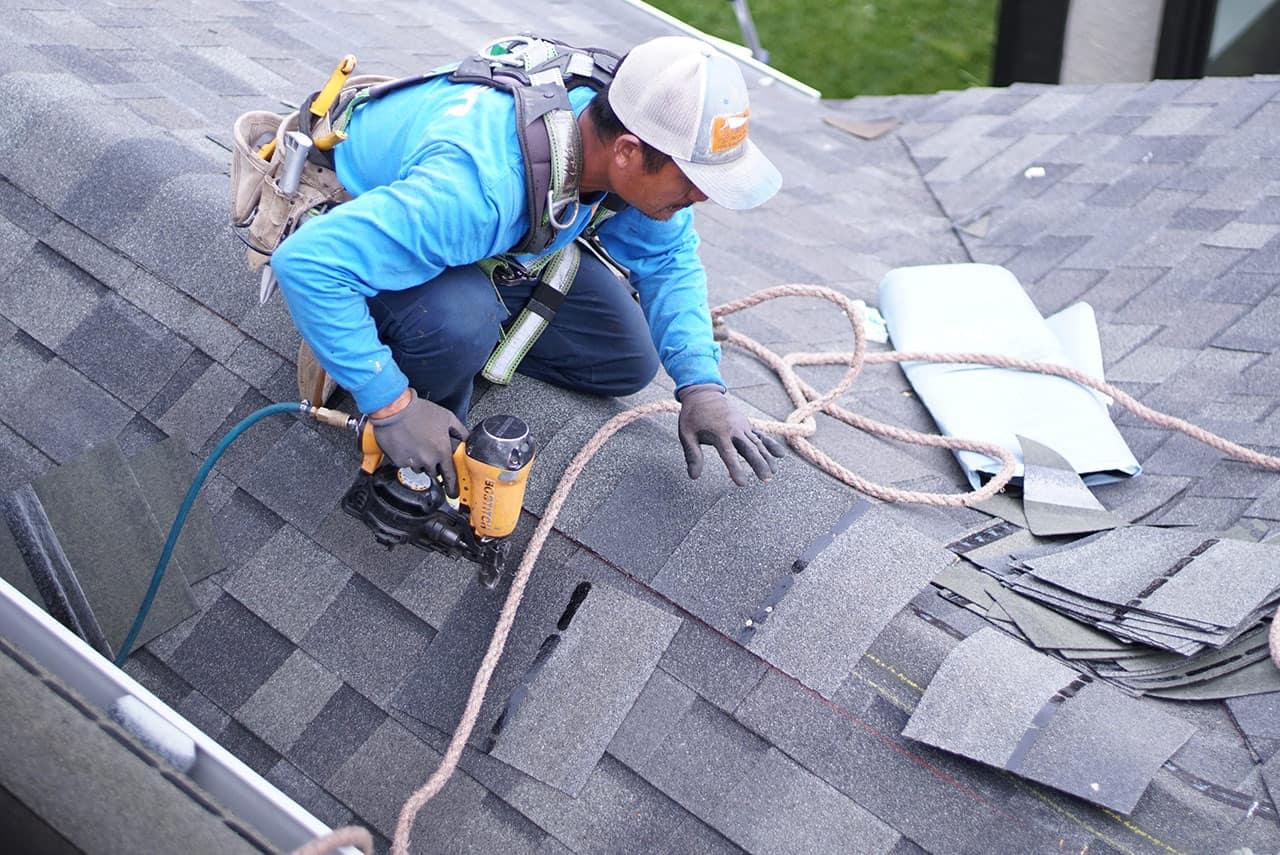
While some signs of a roof leak are obvious, such as dripping water and a rapidly growing water stain on the ceiling, other signs are more subtle, including a musty smell, bubbling paint or wallpaper, and even steadily increasing utility bills. Some may not even notice the subtle changes in ceiling texture until water damage has built up over time.
If you’re experiencing any of the above, you may have a leak that warrants booking a roof leak repair in Calgary. One of the most common misconceptions about a roof leak is the belief that wherever the water pools, that must be where the source is. Not quite! In this article, we discuss signs of a roof leak and how to locate the source.
Subtle and Not-So-Subtle Signs of a Roof Leak
People often detect roof leaks through a combination of visible signs, smells, and other clues. Here are the most common ways:
- Water stains on the ceiling – A brown or yellow stain is a telltale sign that water is seeping through the roof and into the drywall.
- Dripping water during rain – Hearing or seeing drips in your house when it rains is a clear indicator of a roof leak.
- Damp or musty smell indoors – A persistent musty smell may suggest trapped moisture or mold caused by a roof leak that’s not easily visible.
- Peeling or bubbling paint or wallpaper – This happens when there is a buildup of moisture that causes paint or wallpaper to peel away.
- Changes in ceiling texture – Look for warped or sagging areas which may not stand out immediately, but can indicate water damage building up over time.
- Mold or mildew growth – Mold on walls, ceilings, or corners can signal a hidden leak.
- Curled, missing, or damaged shingles – Any damaged or missing shingles are often the source of a leak.
- Sunlight shining through roof boards – If you can access your attic and can see daylight peeking through the attic roof boards, water can easily enter.
- Increased utility bills – While there are other reasons for utility bills increasing, hidden leaks may cause insulation to deteriorate, forcing HVAC systems to work harder.
- Staining of stucco siding material.
- Siding materials in general peeling away.
- Eavestroughs starting to come away from the fascia board.
Some of these signs may be subtle, but if left unchecked, could lead to bigger problems down the road.
Locating the Source of a Roof Leak
Finding where the leak is happening is not always a straightforward process, as the source is sometimes far from where the water shows up inside your home. As water seeps through the outer layers, it follows these surfaces until it finds an easy spot to drip down, making it harder to pinpoint the exact entry point.
Your best bet is always to call a professional residential roof leak repair in Calgary. In the meantime, here are some simple steps you can take to trace the leak to the source.
1. Inspect the attic
The attic is the first place water will enter, so it’s an ideal spot to inspect. If you’re able to access your attic:
- Bring a flashlight and look for dark water stains on rafters or insulation.
- Check for soft wood, peeling paint, or moist areas, as these indicate water penetration.
- If it has recently rained, follow any wet trails backward to the source of the leak.
- Check the Bathroom / Dryer line connections , often these are leaking air causing attic rain, which is a leak caused within the interior of the attic!
2. Examine the roof
Once you’ve located potential signs of a leak inside, it’s time to inspect the roof from the outside:
- Look for cracked, curled, or missing shingles that could allow water to enter.
- Check the metal flashing around chimneys, vents, and skylights for rust, gaps, or damage.
- Clogged gutters can cause water to back up and seep under the roof. Ensure they’re clean and functional.
- Water flows through valleys during rainstorms, so even a small gap can cause a leak.
3. Use a water hose test
If you suspect a leak but can’t find the source, a water hose test can help.
- Get a friend or family member to help.
- One person stays inside the house (attic or room with the stain) while the other uses a garden hose to spray small sections of the roof.
- Start at the lower sections of the roof and work upward.
- As soon as the person inside sees water, you’ve pinpointed the source of the leak.
TIP Focus on one area at a time only, and ensure the test isn’t too aggressive as you can cause serious damages inside!
When to Call a Professional
Roof leaks that persist despite your attempts to find the source or those located in hard-to-reach areas require an expert’s eye. A roofing professional can perform a thorough inspection, including checking areas you might overlook, and use specialized tools to detect hidden leaks. They also have the safety equipment to physically check your roof for damage.
At No Payne Roofing, we have the tools and expertise to spot hidden damage with a leak test on even the smallest of damaged areas. Contact us today to book an appointment.





